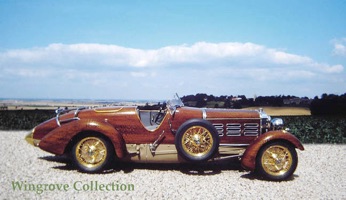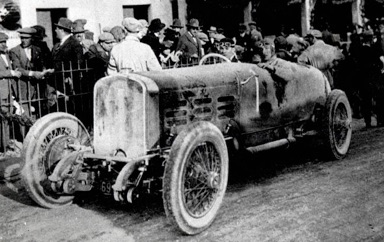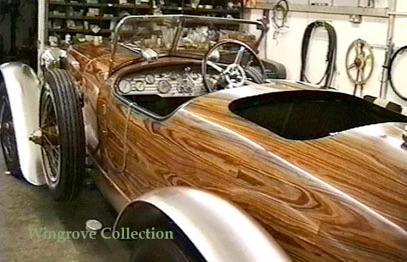We heard no more of the car for about two years, other than it had been completed and sold. Then I received an e-mail from San Francisco asking if I would build the writer a model of his Tulipwood Hispano Suiza. Knowing that the original car did not live in that town, and having previously booked flights to be in the area in a couple of months time, we arranged to meet. Imagine our delight in seeing Roy’s creation again and finished in all it’s glory. Well not initially. It had been finished and he would have been delighted with the workmanship, but what had they done to it. Who ever had completed the car for the sale room, had STAINED that beautiful Tulipwood to a dark brown, and PAINTED those beautiful polished aluminium fenders, that he was so proud of, a metallic mud/copper colour. The new owner had no idea of my previous connections with Roy Middleton and the car, so was delighted to hear the story and have copies of the photos of the building of it. He also said that he would have the car stripped, the stain removed back to the original finish and the fenders put back to polished aluminium. I do hope this has been completed and Roy may rest in peace having built the only Tulipwood H6C Hispano Suiza in the world, and it is as he designed it.
Needles to say I was delighted to be asked to build a model of a full size car that it’s self had been built from my own body modelling plans, but how to reproduce the wood grain. For the Honduras Mahogany I had always used pearwood, because with the very fine grain, I can simulate a scale mahogany. Now I have been a long time collector of hardwoods, and it so happen that I had a large piece of Tulipwood timber. On close inspection of the end grain I noticed a ‘blip’, that gave me the idea, that should I be able to slice this with a very fine saw, I might just be able to reproduce the graining of the full size car to something like a scale of 1/15th. Rosewoods are, like pearwood, very dense and fine grained, so there was no problem there, however, with just one ‘blip’ I thought I might be hard pressed to get enough veneers to complete the body work. I found a timber merchant in the south of England who had a stock of Tulipwood blocks, like the one that I had, so I checked them all out and found two others with a similar ‘blip’ in them. This was just enough to provide the veneers for the one model.




